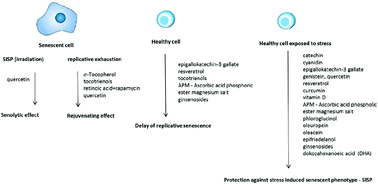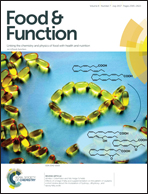Effects of bioactive compounds on senescence and components of senescence associated secretory phenotypes in vitro
Abstract
Senescence is a permanent cell cycle arrest that is accompanied by changes in cell morphology and physiology occurring in vitro and in vivo. Senescence evolved as a beneficial response to damage promoting wound healing, limiting fibrosis, fighting against cancer and helping embryonic development. However, excessive accumulation of senescent cells is considered to play a substantial role in the development of aging-related diseases and other morphological and physiological changes associated with aging. Therefore, the aim of many researchers is to find out a way to eliminate senescent cells and improve the health condition of aging people. Bioactive compounds e.g. polyphenols, vitamins, phenols, carotenoids, ginsenosides, omega-3 fatty acids, and compounds isolated from algae (phloroglucinol, sargachromal) are known to affect important biological functions. Recent in vitro studies have revealed that they can protect different types of cells against stress induced senescence (SISP), delay replicative senescence, rejuvenate senescent cells and exert senolytic effects. This review summarizes how the biological compounds listed above affect cell morphology, cell proliferation, specific cell functions, the activity of senescence-associated β-galactosidase (SA-β-gal), the shortening of telomeres and reduction of telomerase activity, production of intracellular reactive oxygen species (ROS) and lipid peroxidation products, expression of antioxidant enzymes, expression of p53 and p21 – key effectors of cell cycle arrest leading to senescence – and expression of some key components of senescence associated secretory phenotype (SASP) in replicative senescence, stress induced senescence (SISP) and under conditions which may lead to the development of senescence such as UV-A and UV-B irradiation of cells and the production of matrix metalloproteinases (a component of the SASP) in cells. Finally, future perspectives of this research are discussed.



 Please wait while we load your content...
Please wait while we load your content...